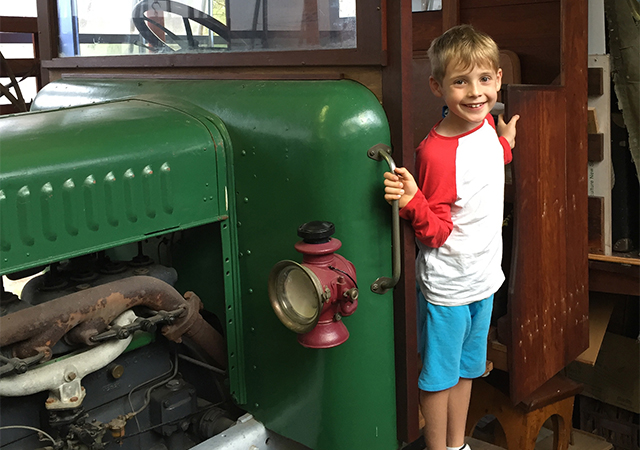There are thousands of objects on display at the Kempsey Museum. Here’s a list of five things that caught the eye of a city-born, curious seven-year-old boy.
It sheds light on the appeal and success of regional museums that some of their city cousins could learn from.
1) Moving models
The automated sawmill model.
Bringing to life Kempsey’s history of logging, an automated sawmill takes pride of place in the centre of the museum. This locally-handcrafted automated diorama of workers busily sawing and milling timber, firing-up engines and commanding horse drawn carts has children instantly engaged.
2) Taxidermy
The museum's taxidermy display features animals from rosellas to wallabies.
Despite a recent revival of taxidermy with Wild Planet at the Australian Museum, taxidermy exhibits have been considered out of fashion for a long time. Not so in regional museums and Kempsey is no exception.
Their large heritage showcase displays a range of stuffed animals and is a literal cabinet of curiosity for the seven-year-old. Children always seem perplexed by the concept of taxidermy. It’s real, but it’s dead. It’s dead but it looks alive.
3) Machines

The museum features a real-life steam train.
Many regional museums have more machines than they know what to do with.
So why not let visitors climb aboard and imagine working on a farm or riding a steam train? Nothing beats role playing in the seat of a tractor. Putting out imaginary fires with disused fire engines creates lasting impressions and learning.
4) Sound

Before mobile phones calls were forwarded through switchboards like this one.
Apparently one of the most popular mobile phone ringtones has its roots in a real sound from a real phone. And you can hear these phones ring at Kempsey Museum. In fact, you can make this sound over and over again, and most kids do once they know how, at the telephone exhibit.
Aural delights continue with the opportunity to ring an old school bell. This instantly gratifying sound can only be really enjoyed if you make the bell ring louder each time you pull you the rope and watch all the adults around cover their ears.
5) People
Slim Dusty meets Rattus Rattus.
Black rats are all over Kempsey Museum. Rather than a pest control problem, Rattus rattus is part of an engaging kids trail used to encourage children to delve deeper into the stories and significance of the collection.
Kids are asked to find 14 rats. Each has a name and gives the answers to a list of questions about objects in the museum and local identities. In order to complete the quest, it becomes evident that the seven-year-old needs to enlist the assistance of a volunteer member of staff. Clever. Cunning even. The volunteer and child engage in a casual act of learning that revives the long lost art of visitor staff interpretation.




